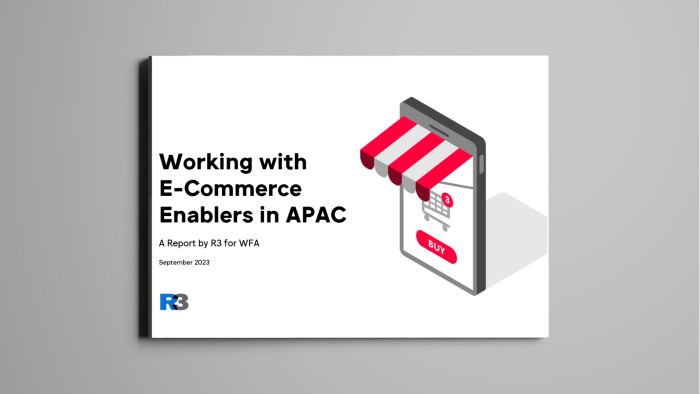Get analysis, insight & opinions from the world's top marketers.
Sign up to our newsletter.
Shufen Goh, Co-founder and Principal at R3, shares key insights from a recent report on the state of e-commerce enablers in APAC.

Physical retail has certainly made a comeback since 2022. E-commerce, however, remains an area of growth for categories like CPG, Beauty, Apparel, and Consumer Electronics. The continued strength of e-commerce in the APAC region is reflected in the high level of digital uptake, with e-commerce sales forecasted to make up more than 65%1 of the global market by 2024.
Many brands have already started a retail journey online, in response to changes in customer and merchant behaviour, though not all have progressed at the same pace and to the same extent. Each brand has a unique e-commerce strategy. This strategy depends on the brand’s product category, level of investment, and overall vision. This leads to varied requirements when it comes to engaging agency partners in this space. Such partners are also known as e-commerce enablers.
To help marketers better understand the partnership options available, R3, supported by WFA, conducted a survey on ‘Working with e-commerce enablers in APAC’. The survey was based on assessments of 47 enablers in Singapore, Thailand, Malaysia, Indonesia and Japan.
Overall, the survey revealed that the e-commerce enabler landscape in APAC is still developing, with new services being added as agencies mature.
There are three key factors to consider:
There are generally four archetypes of e-commerce organisational structures in the APAC region. Identifying which e-commerce archetype a brand best aligns with will inform the type of agency best suited to lend support. It will also be useful in defining scope of work.
The four archetypes can be described as:
The landscape of e-commerce enablers includes agencies belonging to holding companies and networks, as well as independents. Brands with mature e-commerce capability in-house are likely to be looking for enablers who offer a high degree of specialisation, while a company without a dedicated in-house team will probably consider partnering with an agency that offers high levels of integration with other marketing functions (i.e. data, CRM, shopper).
Brands deciding on engaging e-commerce enablers can narrow the selection of potential partners by aligning selection KPIs to their market penetration strategies.
Localisation, geography and unbanked populations in APAC make regional specialism a challenge for non-holding companies and non-networked e-commerce enablers. Independent agencies are more likely to operate in one market, or in multiple markets with the same platform. (i.e. Shopee).
The type of capabilities needed will also indicate whether a holding company or independent provider is suitable. E-commerce business analysis as a function, for instance, can be done effectively regardless of location, while inventory management requires on-the-ground capability.
Overall, as marketers look to accelerate e-commerce growth, a good understanding of e-commerce enablers, based on up-to-date analysis of the market, can foster company growth and development for key sectors in the new digital APAC landscape.
WFA member? Download the report on 'Working with E-Commerce Enablers in APAC' here.